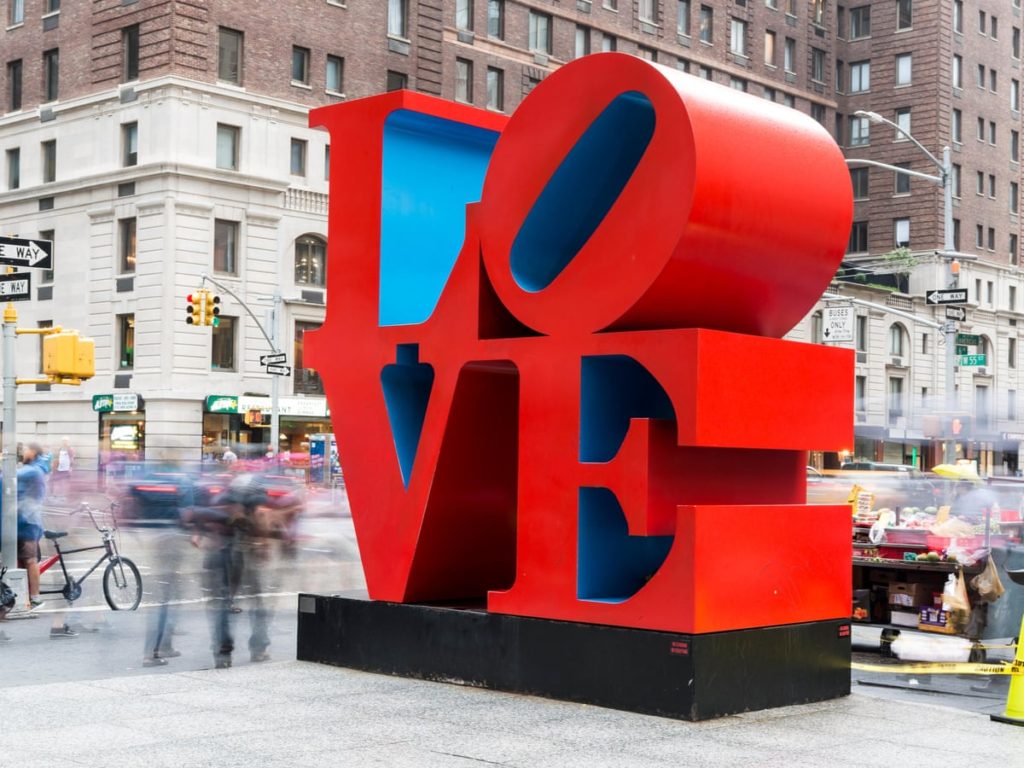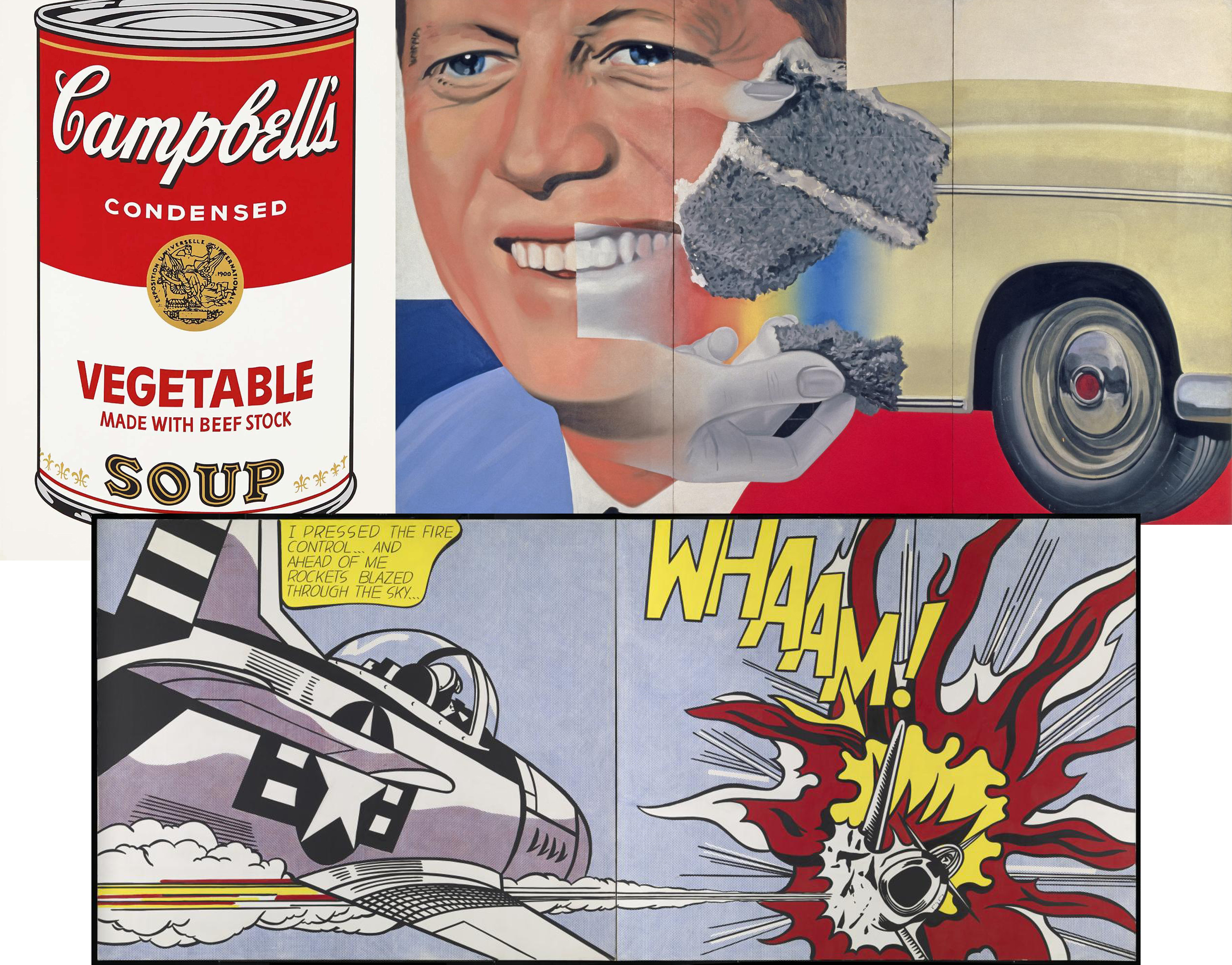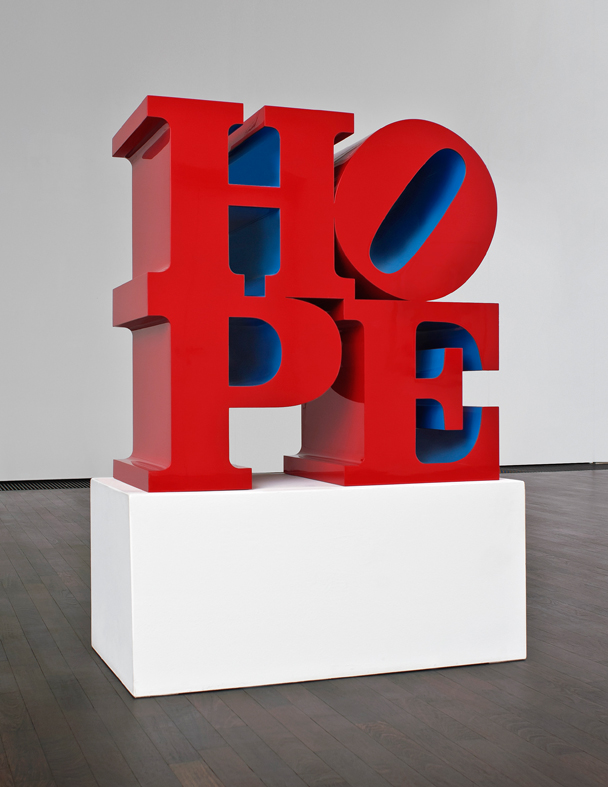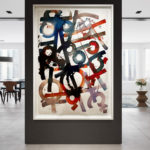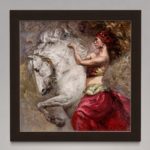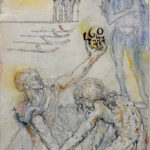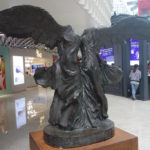By Reed V. Horth, for ROBIN RILE FINE ART
POP Art was a movement which was borne out of the angst of the late 1950’s and early 1960’s. The world was changing before our eyes and POP was the anti-establishment and is eminently opposed to the “elitism” which permeated much of academic art in prior years. It was purposefully juxtaposed to what was conformist or fit neatly into the box of what “Art” is. Utilizing aspects of mass culture (i.e. advertisements, comic books, cultural icons, etc.) in the context of fine art, POP embraced what was often thought of a kitsch and re-contextualized it into something completely unique. Pop Art was borne out of our post-war obsession with mass-produced commodities and prompted a sea-change in the way that collectors, thought of, purchased and invested in Art, as well as changed the way artists marketed, branded and editioned themselves. Andy Warhol’s Campbell’s Soup Cans and Roy Lichtenstein’s comic book-styled panels epitomized and personified our consumer-oriented milieu. No longer was Fine Art confined to the wealthy. This new thought process opened a whole new buyer-class to the world of fine arts which, in turn, brought a broader focus to the arts as a whole. In turn, perception-based speculation turned fine art into a commoditized asset which was bought and sold with the idea of making money. Rarity, speculation and innovation became as prominent of motivators as image quality and talent.
(L) Andy Warhol Campbell’s Soup I (Vegetable) FS-II.53. Screenprint on white paper. 1968 New York Publisher: Factory Addition, New York (M) (R) James Rosenquist “President Elect”, oil on masonite, 7 feet 5 3/4 inches by 12 feet, 1960-1, 1964, Centre Georges Pompidou, Musée National d’Art Moderne/Centre de Création Industrielle, Paris (BELOW) Roy Lichtenstein “Whaam” Acrylic and oil on canvas. support: 1727 x 4064 mm frame: 1747 x 4084 x 60 mm. painting. Tate Modern, UK. Purchased 1966
Through changing the milieu of art itself, POP created its own brand and its own voice. Indeed, POP changed the way not only Art works, but the world itself. Many POP artists had talents born out of the advertising industry and the graphic arts. Employing this education in commercial imagery and buyer awareness to design and inform their own fine art, these artist created images that literally and figuratively “POP” when seen in person or in context. Warhol and Lichtenstein were joined by Jasper Johns, Robert Rauschenberg, Tom Wesselman, Jim Dine, Claes Oldenburg, James Rosenquist and, of course, Robert Indiana. Each used his own brand of commercialism in their creation of iconic and patriotic images and, in turn, became iconic in-and-of themselves. Jasper Johns (b. 1930) Photography by Geoffrey Clements. Three Flags, 1958 Encaustic on Canvas, 30 7/8 x 45 1/2 x 5 inches. Permanent Collection, The Whitney Museum of American Art
Jasper Johns (b. 1930) Photography by Geoffrey Clements. Three Flags, 1958 Encaustic on Canvas, 30 7/8 x 45 1/2 x 5 inches. Permanent Collection, The Whitney Museum of American Art
By the same token, Robert Indiana’s “HOPE” is a quintessential statement of our zeitgeist. Originally created for the 2008 Democratic National Convention, “HOPE”, next to “LOVE” is the quintessential statement of his oeuvre.
In fact, to co-opt a story recently told to me by a colleague of mine, he mentioned a conversation he had with a friend at a restaurant recently. A perceptive and intuitive waitress overheard the conversation, and my friend asked her, “What is more impactful, HOPE or LOVE?”
Her immediate reaction was to say “HOPE”.
Surprised by the certainty of her answer, my friend then followed with “Why?”.
“Because LOVE is sometimes fleeting. HOPE lasts forever.”
Intuitive indeed.
Indiana’s “HOPE” is supposed to be jarring. It is supposed to stop you in your tracks. It is supposed to linger in your thoughts and it is intended to make you think. This is what POP ART is and has been since the 1950’s. This is what POP Art will prove to be as we move forward in time.
“HOPE” lasts forever.

